VELUTINA Hooker f., 1868 (engl./ fr.)
Synonyms :
Cotyledon beckeri Schönland & Baker f. (1902) / Cotyledon velutina var. beckeri (Schönland & Baker f.) Schönland (1915)
Cotyledon mollis Schönland (1915)
Distribution : SA (Eastern Cape, S KwaZulu-Natal); subtropical thickets.
Description (according to Tölken, 1985, Ernst van Jaarsveld in IHSP, 2003, and Cotyledon and Tylecodon, 2004) :
Erect succulent shrubs 2 to 3 m tall, little branched.
Branches erect to erectly spreading, woody at the base, to 45 mm thick, with purplish-brown bark peeling in older plants.
Leaves opposite, oblanceolate, rarely obovate, 5 - 13 x 2 - 8 cm, glabrous to more or less tomentose, dorsiventrally flattened and scarcely convex on both surfaces, green to greyish brown and sometimes with reddish margin towards apex, margin acute, cuneate but with auriculate base below inflorescence, tip obtuse, mucronate or cuspidate.
Inflorescence to 60 cm with 3 – 5 dichasia, each with 5 – 10 reddish-yellow glabrous flowers, peduncle 3 – 4 mm thick at the base, glabrous or viscid.
Flowers : Sepals usually narrowly triangular, 6 - 8 mm long, acute, viscid, corolla tubular, tube cylindrical, copper-coloured or orange and often with yellow margins, tube ampullaceous to almost cylindrical, to 17 mm long, glabrous, rarely hairy on outside but glabrous within, petals lanceolate, spreading to recurved, anthers yellow.
Flowering time : Mid-summer.
Note :
Cotyledon velutina appears to be the largest Cotyledon species. A diagnostic character immediately separating it from all other species of the genus is the - usually - auriculate (ear-shaped) leaf base of the last two leaf pairs below the inflorescence, but at times these projections are not very pronounced...... In some plants they do not seem to develop at all but the species is in any case easily distinguished by its glabrous filaments (see photos below).
-------------------------------------------------------------------------------------------------------
Synonymes :
Cotyledon beckeri Schönland & Baker f. (1902) / Cotyledon velutina var. beckeri (Schönland & Baker f.) Schönland (1915)
Cotyledon mollis Schönland (1915)
Distribution : Afrique du Sud (Cap-Oriental, sud du KwaZulu-Natal); fourrés subtropicaux.
Description (selon Ernst van Jaarsveld, l'IHSP, 2003, et Cotyledon and Tylecodon, 2004) :
Buisson succulent au port érigé atteignant 3 m.
Branches droites ou écartées de manière dressée, à base ligneuse (45 mm d'épaisseur), avec une écorce marron bordeau s'écaillant chez les vieux sujets.
Feuilles velues ou glabres, plates ou convexes sur le dessus, oblancéolées, 5 – 13,5 x 2 – 8 cm, glauques ou vertes, marges aiguës, à base en forme de coin et auriculée, la pointe étant obtuse et mucronée.
Inflorescence de 60 cm avec 3 – 5 dichasia, chacun ayant 5 – 10 fleurs glabres de couleur jaune-rougeâtre, pédoncule de 3 – 4 mm d'épaisseur à la base.
Fleurs : Corolle tubulaire, tube cylindrique, jaunâtre, atteignant 17 mm, pétales écartés ou recourbés, anthères jaunes.
Période de floraison : Milieu d'été.
Note :
Cotyledon velutina semble être la plus grande espèce de Cotyledon. La caractéristique qui le sépare immédiatement des autres espèces du genre est cette base de feuille auriculée (ayant comme deux petites oreilles) visible sur les deux paires de feuilles en dessous de l'inflorescence.
In habitat :
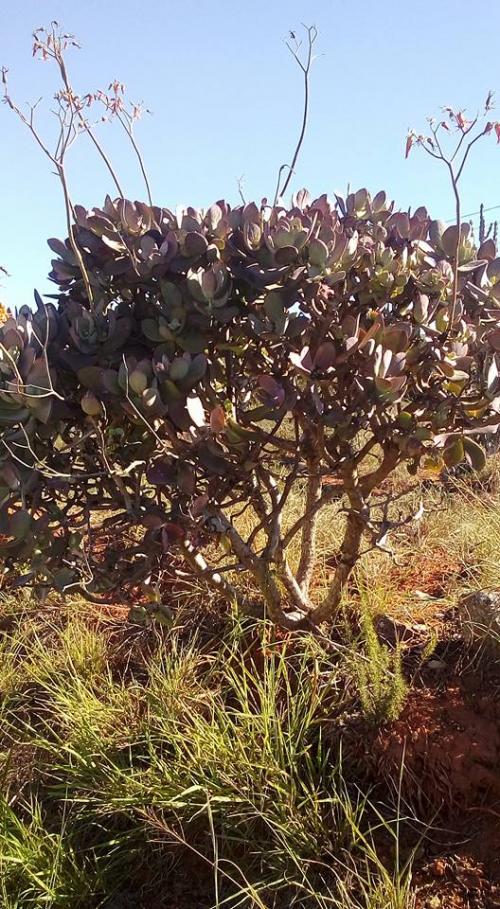
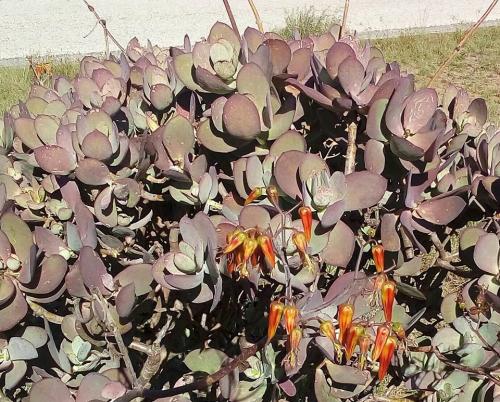
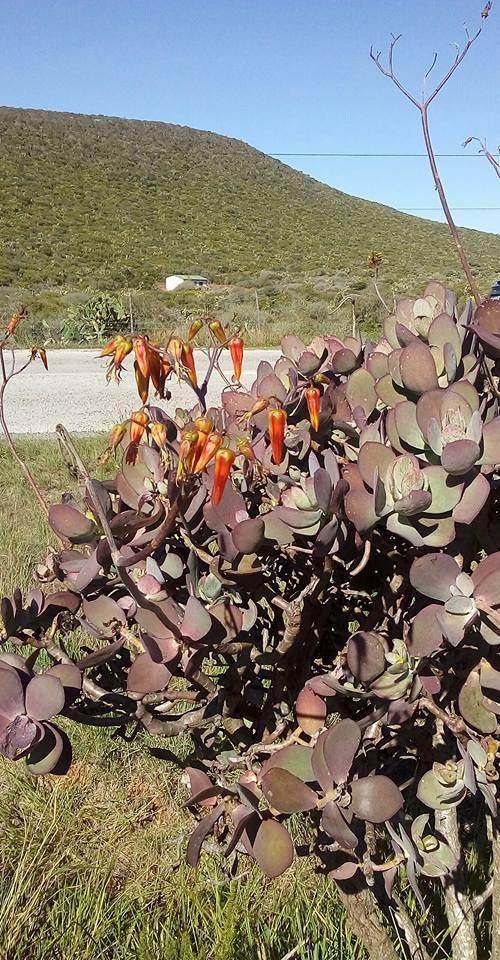
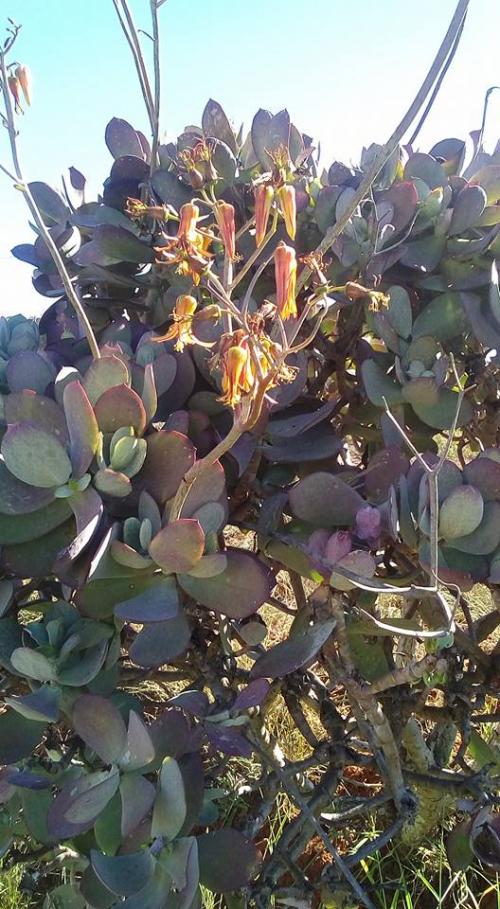
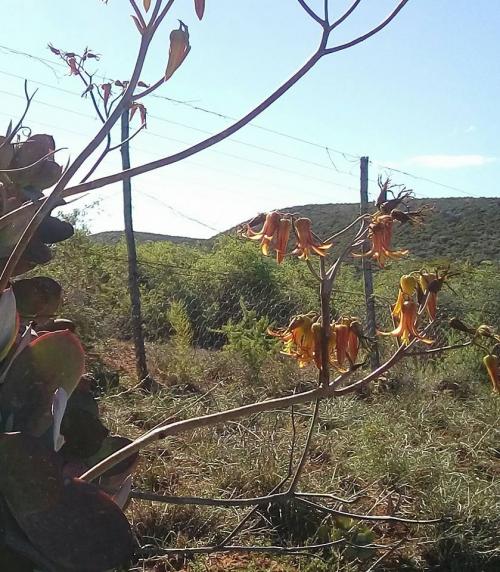
Between Wolwefontein and Uitenhage, Eastern Cape.
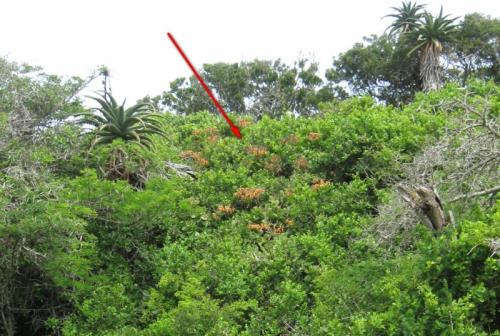
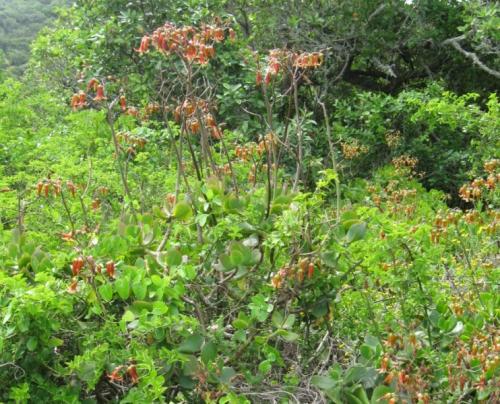
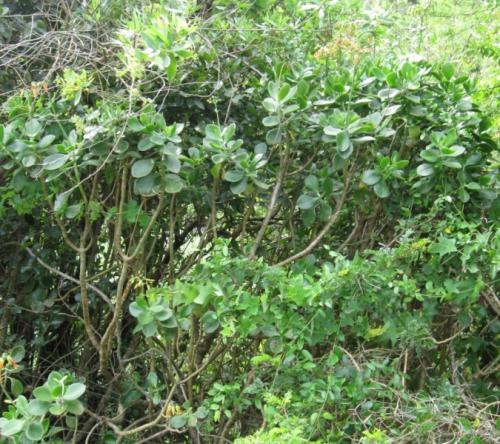
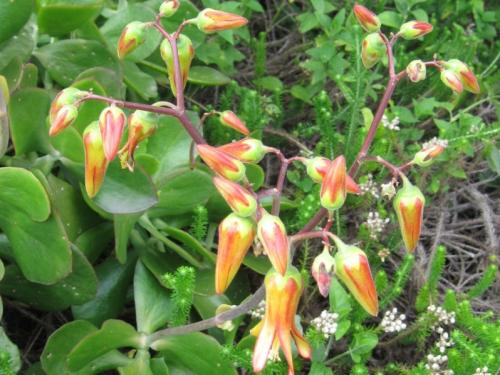

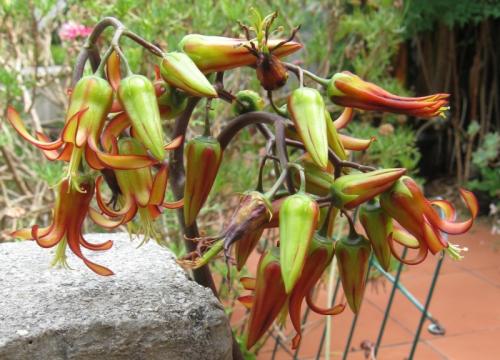
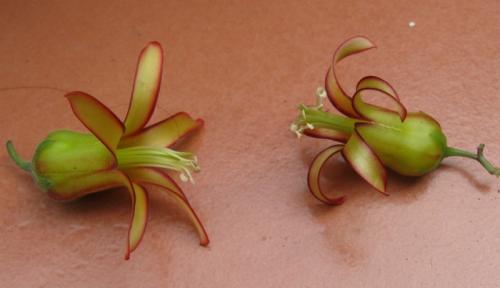
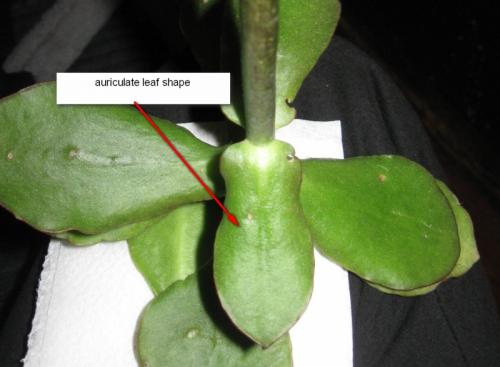
Maitlands river area just west of Port Elizabeth.
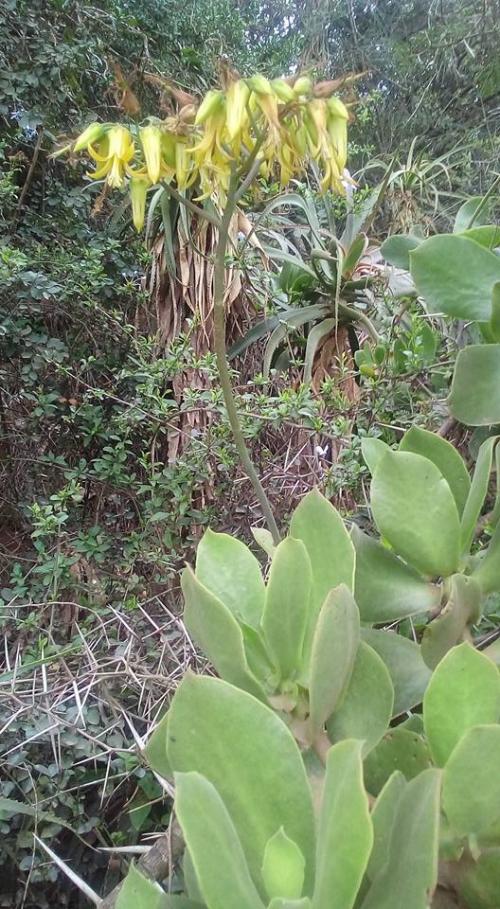
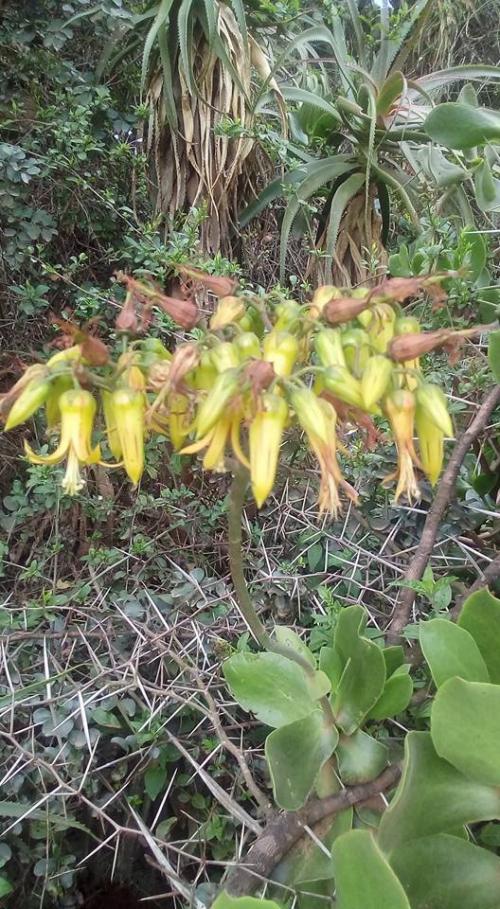
Patensie, Eastern Cape.
A very old Cotyledon velutina tree :
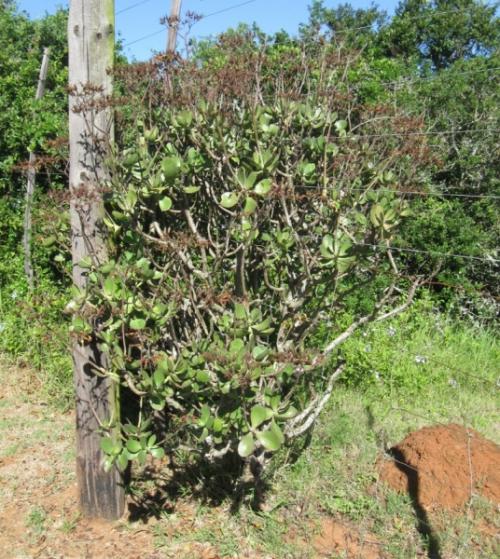
Auriculate leaf bases :
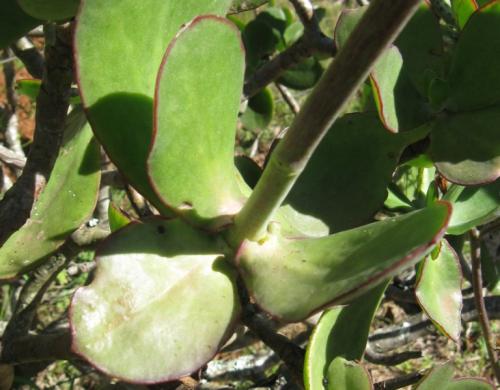
"Purplish-brown bark peeling in older plants ...." :
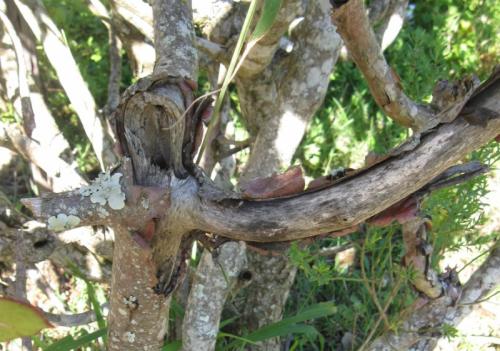
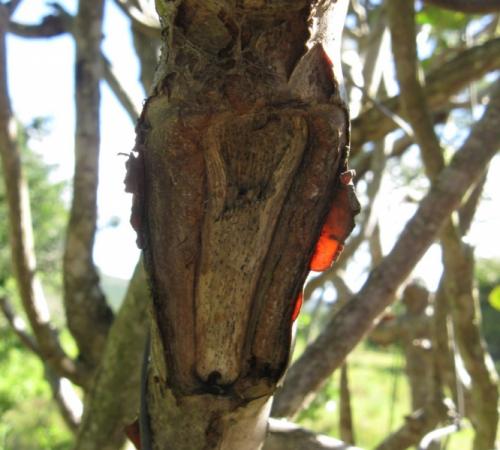
------------------------------------------------------------------------
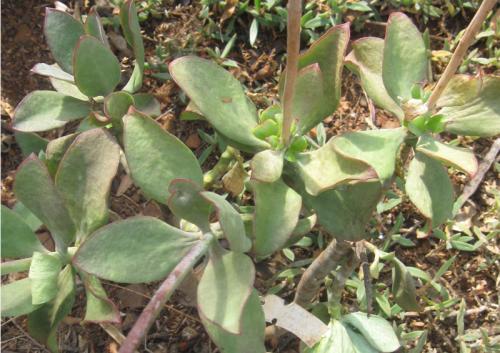
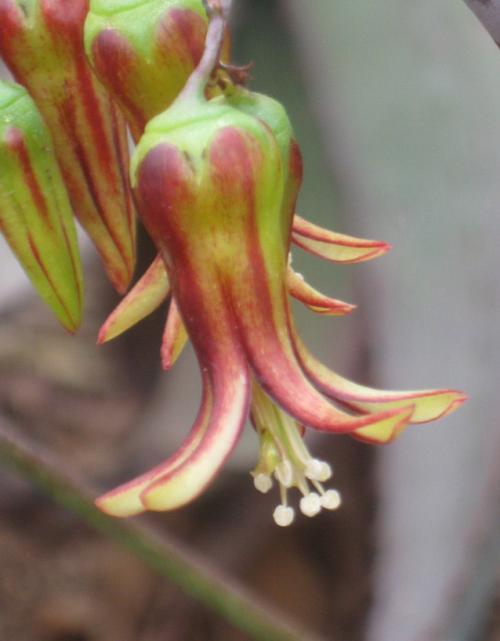
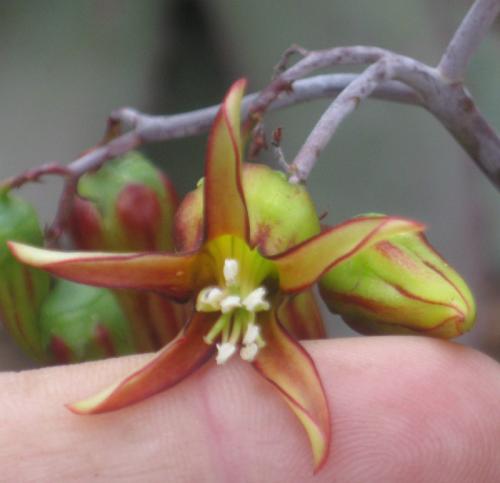
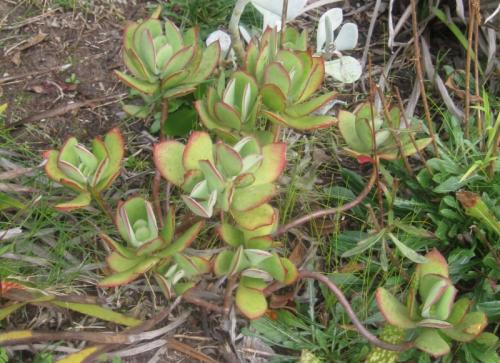
A hard grown plant, unshaded.
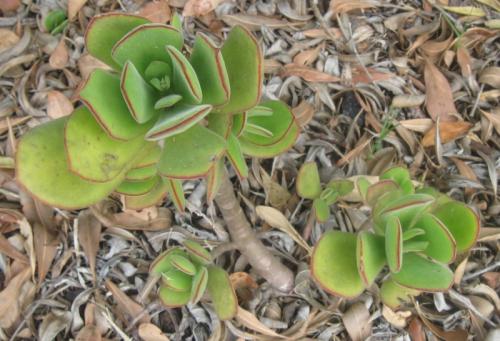
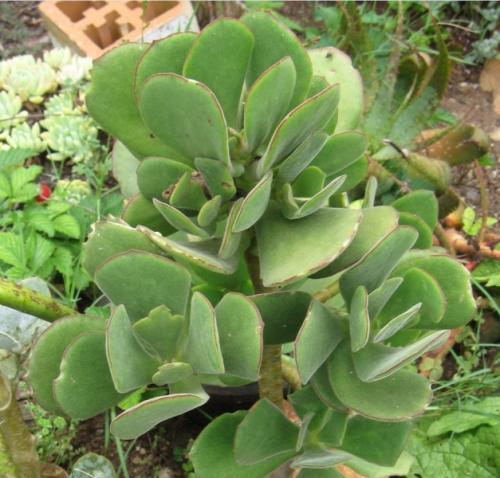
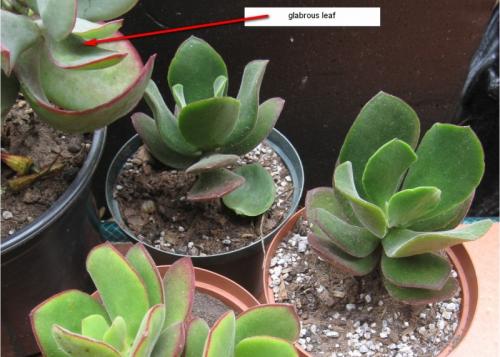
Tomentose forms of C. velutina.
A plant with tomentose and glabrous leaves on the same stem :
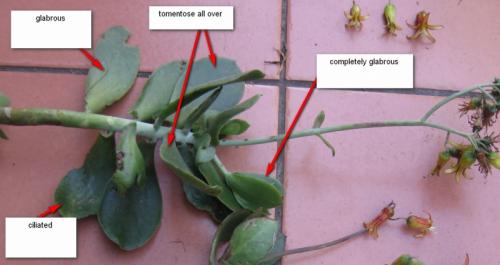
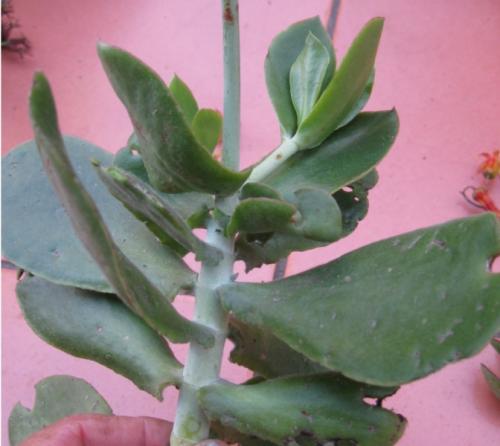

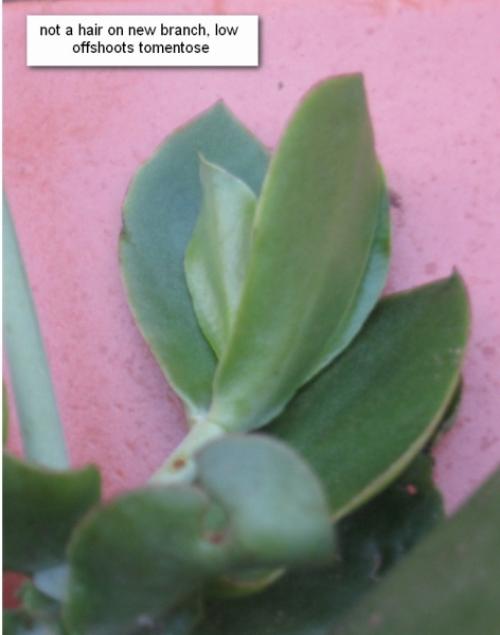
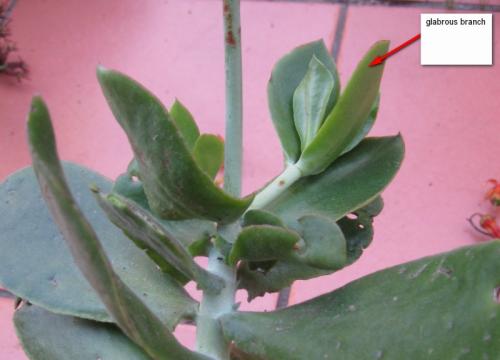
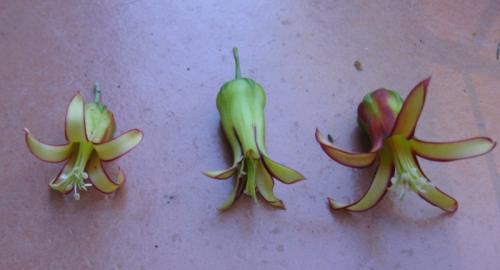
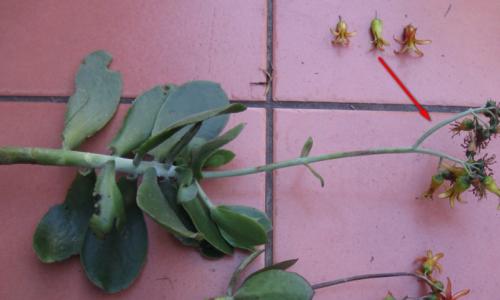
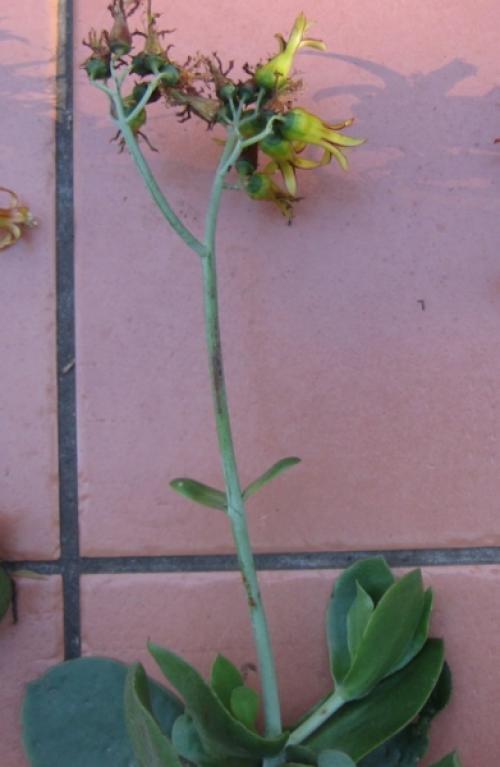
Photos Jacquie Koutsoudis
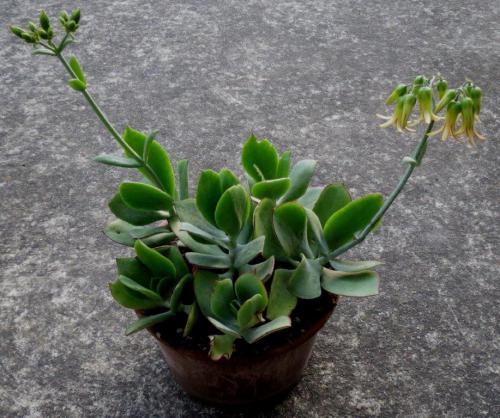
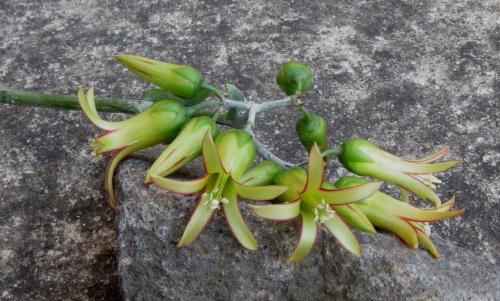
Photos Noelene Tomlinson
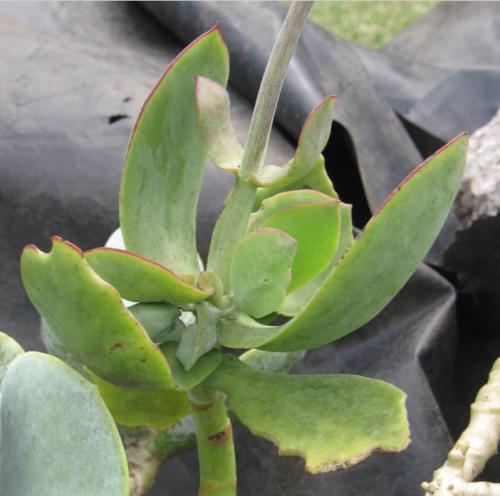
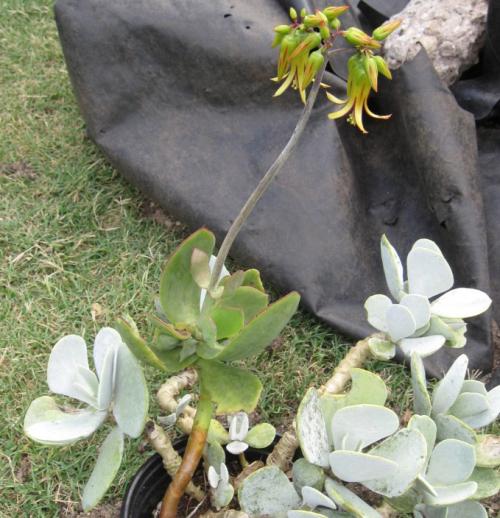
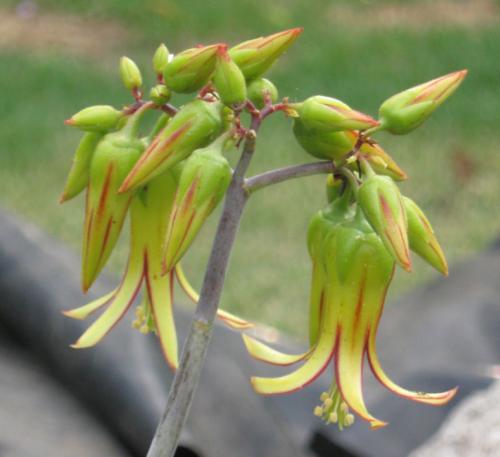
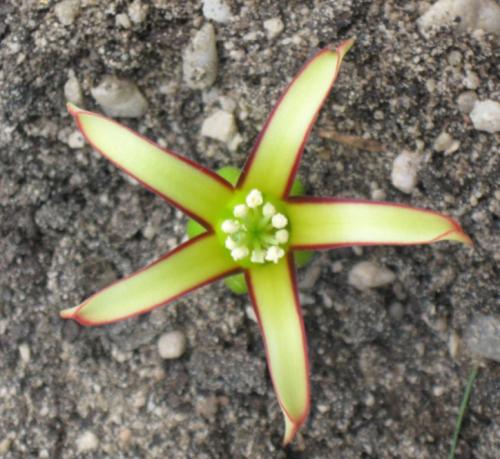
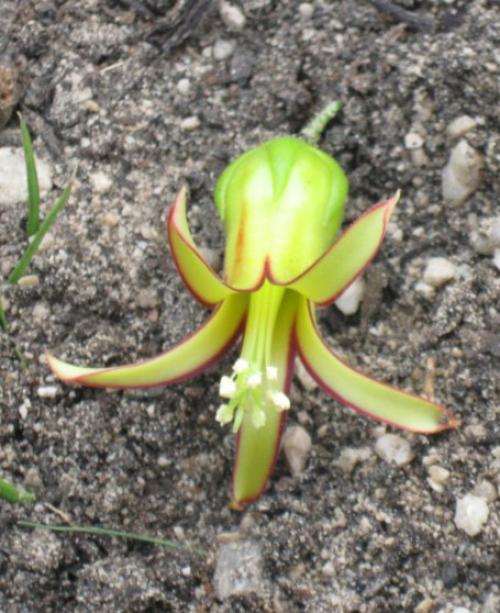
C. velutina - glabrous inside :
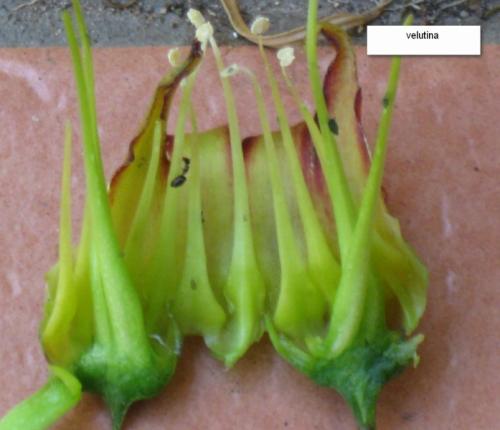
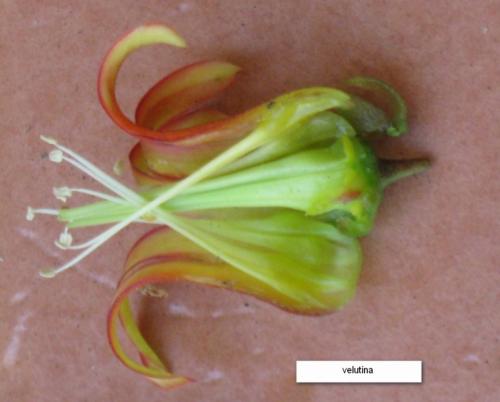
All other Cotyledon species are hairy inside - at the base of the filaments :
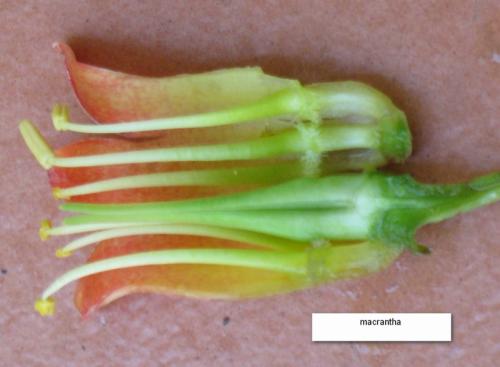
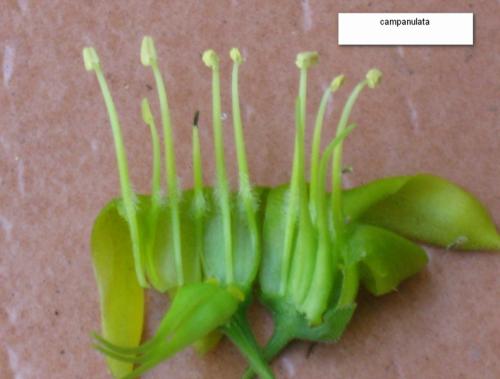
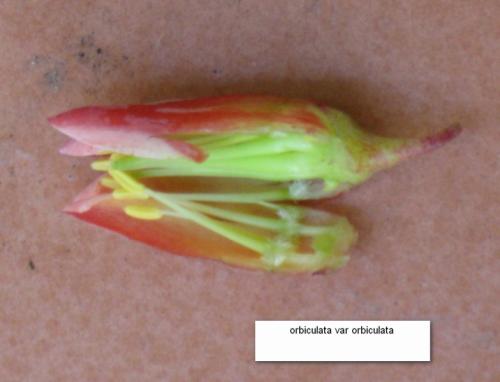
Photos Jacquie Koutsoudis